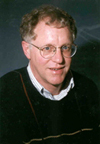Today
9:30 a.m.
EHS 27
Performing an Effective Safety Walkaround
Bldg. 70A-3377
10 a.m.
Physics
The National Academy's Beyond Einstein Report and the Future of Space Astronomy
Joel Primack, UC Santa Cruz
Bldg. 50 Auditorium
11 a.m.
Computational Research
Superlink-Online: A Large-Scale Distributed System for Genetic Linkage Analysis
Mark Silberstein, Technion, Israel
Bldg. 50B-4205
Noon to 1 p.m.
EAA
Giants-Dodgers Ticket Sale
Cafeteria
4:45 p.m.
Nuclear Engineering
Outline of Japanese Seismic Design Review Guide
Abe Hiroshi, Japan Nuclear Energy Safety Organization
Shepherd Room, 3rd Floor, Etcheverry Hall (campus)
Tomorrow
10 a.m.
EHS 10
Intro to EH&S at Berkeley Lab
Bldg. 70A-3377
Noon
Yoga Club
Class with Naomi Hartwig
Bldg. 70-191
1:30 p.m.
Computational Research
Observations from a Journey Toward a Generalizable Data Server Architecture for Ecological Science
Division
Catharine van Ingen, Microsoft Research
Bldg. 50A-5132
2:30 p.m.
Virtual Institute of Microbial Stress and Survival
Functional Genomics Techniques Applied in Model (and Not So Model) Microbes
Gareth Butland
Bldg. 977-120, Potter Street
4 p.m.
Chemistry Department
Teaching Old Polyolefins New Tricks with Modern Catalysts
James Stevens, Dow Chemical
120 Latimer Hall (campus) |
|
 |
|
|
 |
|
| |
Breakfast: Lorraine Omelet with Bacon, Swiss and Onions with Hash Browns
Tomorrow's Breakfast: Breakfast Muffaletta
Pizza: Barbecued Chicken with Roasted Corn and Smoked Mozzarella
Grill: Grilled Salmon Salad with Honey Dijon Dressing
Cultural Cuisines: Chinese Chicken Salad
Deli: Caprese Prestini
Carvery: Tri Tip with Roasted Potatoes and Vegetables
| B'fast: |
6:30
a.m. - 9:30 a.m. |
| Lunch: |
11
a.m. - 1:30 p.m. |
| Full
menu |
| |
|
|
|
 |
|
 |

Studying Astrophysics
In the South Pole
|
|
|
|
 |
 |
|
|
Klein |
|
|
|
Berkeley Lab nuclear scientist Spencer Klein recently contributed an article to the CERN Courier on his work as a physicist working in the South Pole. “The quest for physics can take us in strange directions — climbing high mountains, flying U-2 planes, down mines, and lofting balloons at extreme latitudes,” explains Klein in the story. “The South Pole, too, is one of the stranger places to study astrophysics.” Microwave and infrared astronomers are attracted by the ultra-dry atmosphere and small daily temperature variations, while neutrino astrophysicists are drawn to the extremely clear, 2,800-meter-deep ice sheet, says Klein. Go here to read the full article.

|
 |
|
 |
Cholesterol Awareness Month in September
The Health Care Facilitator wants to remind all employees that September is “National Cholesterol Education Month.” Cholesterol is a soft, fat-like waxy substance found in the bloodstream. It is a normal part of every body, but too much cholesterol in the blood is a major risk for coronary heart disease and for stroke. When too much LDL (bad) cholesterol circulates in the blood, it can slowly build up in the inner walls of the arteries that feed the heart and brain. Together with other substances, it can form plaque, a thick, hard deposit that can narrow the arteries and make them less flexible. Go here to learn more.

|
 |
|
 |
|
 |
Governor Appoints Expert
To Biomonitoring Panel
|
|
|
|
 |
 |
|
|
McKone |
|
|
|
Governor Schwarzenegger has appointed Thomas McKone to California’s Scientific Guidance Panel on Contaminant Biomonitoring. McKone is the acting head of the Indoor Environment Department in Berkeley Lab’s Environmental Energy Technologies Division. He is also an adjunct professor in UC Berkeley’s School of Public Health. The panel makes recommendations regarding the chemicals that are priorities for biomonitoring in the state, based on the likelihood of a chemical’s being a carcinogen or environmental toxin with potential exposure to the public. Read an article about McKone’s research here.
Health Sciences Grant
For Two Lab Researchers
Berkeley Lab physical bioscientists Richard Mathies and Evan Williams, along with other UC Berkeley researchers, are among those that have received a $4.7 million grant from the National Institute of Environmental Health Sciences to develop methods for detecting diseases in humans exposed to environmental contaminants. Williams is part of a team looking at protein adductomics, while Mathies serves on two teams, one researching lab-on-a-chip microsystems, and the other portable biosensors. Go here for more information.
 |
 |
|
|
 |
|
|
|
|
 EMERGENCY INFO EMERGENCY INFO |
 |
Emergency: Call x7911
Cell Phones: Call 911
Non-emergency Incident Reporting: Call x6999
SECON level 3
More Information |
 |
|
|
 |
|
|

